How does a Pin Tumbler Lock work?
by Robert Fox
The most extensively used locking operation in the whole wide world is a pin tumbler lock. These locks are used generally in everything like securing cars, front doors, gun locks, mailbox, safes, and much more. It is a simple estimate that almost 90 percent of locks utilized by us have the mechanism of pin tumbler.
Contents
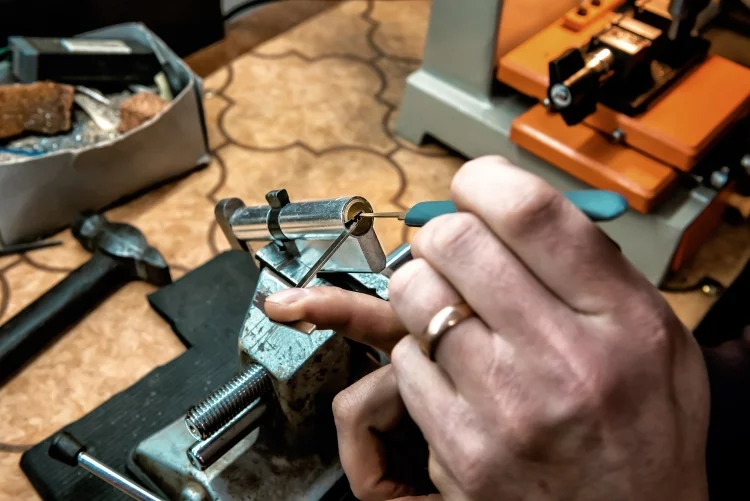
In this segment, you will learn the complete dismantling of a pin tumbler into its easy forms with a good understanding of the working of each component. You will learn the purpose and functioning of all parts of the lock together. In addition, almost all the locks work similarly with a pin tumbler. When you know the whole concept of the mechanism of any pin tumbler then you can understand most of the working of other locks too.
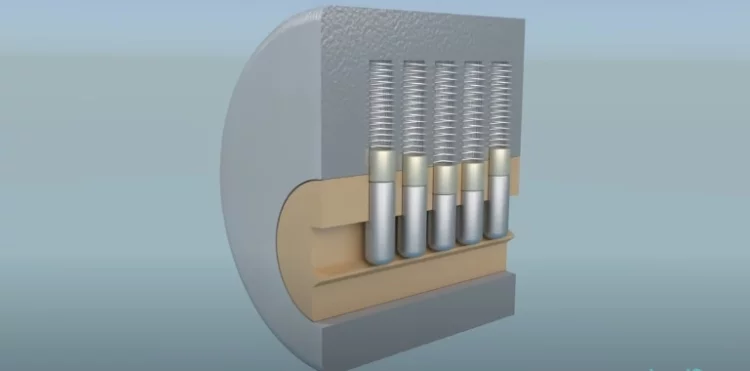
The History of Pin Tumbler Lock
The necessity for locks went back to the time since humanity owned things of value that need to be safeguarded behind the locked doors. The oldest specimen of security concerning technology is a pin tumbler bolt that goes back to the ancient times of 2000BCE in Egypt.
The ancient Egyptian bolts had special brass pins which settle inside the holes of the lock and held the door shut. For unlocking the door there would be a huge wooden key that has ejected pegs to pick the brass pins away from the lock. However, in the old days, the locks used to be humungous and they would need a grown-up adult to move them around.
There was a huge demand for a reasonably sized locking device that started an innovative and creative way of advanced technology of locking devices all over the coming centuries. Though it was not up to the mid of 1800s that Linus Yale Jr. came up with an outline of a lock from the old Egyptian technology of pin tumbler bolt/lock. This lock made by Linus Yale is still being used today.
Infographic Cylinder Pin Tumbler Lock
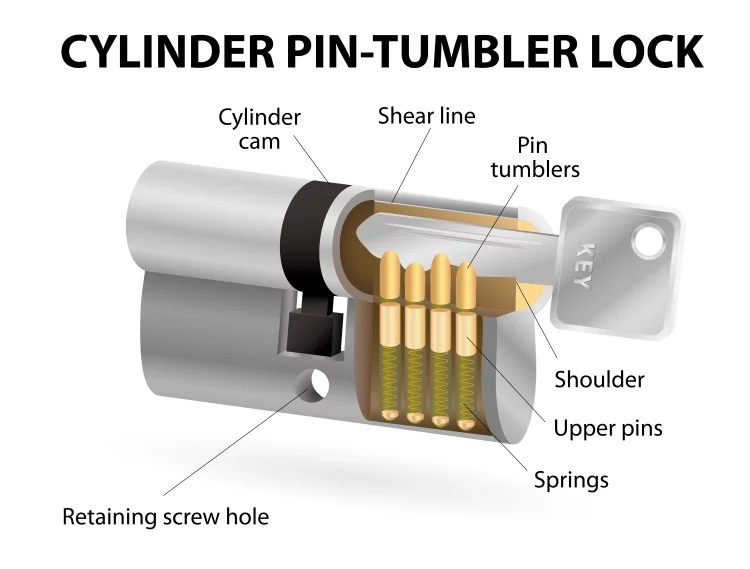
The Parts of the Pin Tumbler Lock Mechanism
Before discussing the function of a pin tumbler let us take a look at all the components' functions and their purposes. There are up to nine main parts of a pin tumbler locking mechanism. You will also observe that every part is pretty simple like this manageable lock system.
Cylinder/Shell
The locks' cylinder is also known as the housing, body, or shell of a bolt. In essence, it is a fixed and fast container that is composed of every functional component of a lock. This part of any lock is commonly installed into every padlock or doorknob. The cylinder or shell of a lock is motionless throughout the mechanism of a lock.
Plug of a lock
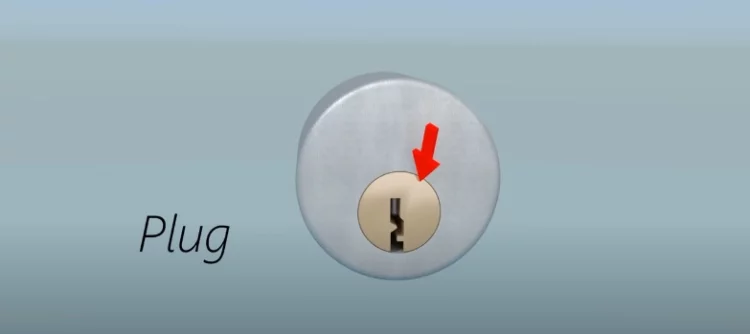
The plug of any lock is inside a cylinder and can rotate easily inside the housing of the lock. The rotation of the plug forms a revolving shear line. In addition, the locks' plug has various holes punctured down in the center. These holes are known as "pin chambers." The pin chambers permit the small pins in and out to obstruct the locks' shear line.
A plug's the front place where any key is installed and in the back of a plug, there is a tailpiece or a cam. The tailpiece of the cam functions to withdraw the latch as well as open the bolt when rotated.
Shear Line
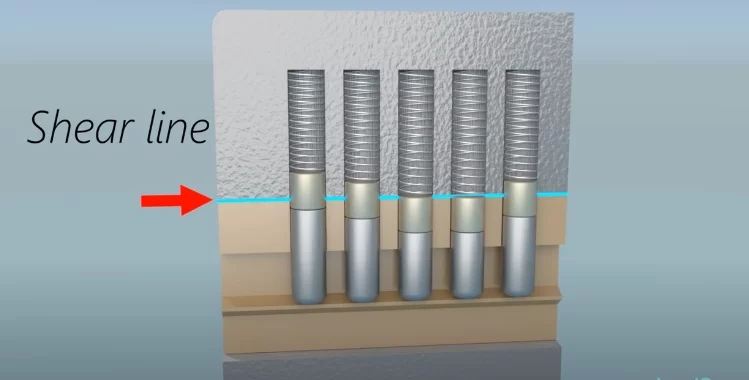
The shear line's marked in blue and it could be defined in simple words like it is the physical space between the plug and the cylinder. The condition of a shear line if blocked or not regulate the motion of a plug. When the shear line's blocked, the locks' plug is constricted. When the shear line isn't blocked, the locks' plug can freely move.
The shear line of a lock is not a physical part of a lock but it serves a role in the function of a lock.
Driver Pins
Main function of a driver pin is to jam the shear line when a key is not inserted inside a plug. A driver pin usually settles someplace between the plug and the cylinder. This jamming is the cause of a bolt staying locked when the wrong key is used.
The rotation of the plug without the use of a key will cause the scissoring of the pins between the plug and the cylinder resulting in it tying and consequently stopping any more spinning. The driver pin of a lock settles among springs and key pins of the lock. The driver pins are of the exact length in contrast to key pins.
Key Pins
The base pin set is the key pins that consistently settle inside the plug. The key pin does literally as their title suggests to create a connection with the inserted key. The length of the key pins varies to form the correct combination of the cuts present upon the key. The key divots are raised to the shear line when they match the length of the key pins.
Springs
The locks' spring does what they do best that is pushing things. Inside the lock, the primary function of the springs is to compel the locks' pin within a plug and also ensure that the driver pin is blocking the locks' shear line while the key isn't inserted.
The springs act as a vital element in the mechanism of a lock and it also ensures that the lock continues to work for several years. Without the presence of springs inside the lock, a minute buildup of corrosion or dust could result in friction in the binding of a pin within a chamber. It might result in other issues including the disabling of a lock.
The springs are also useful in the process of key reading the pins in addition it also lets us design the mechanism of the coded system.
Warding
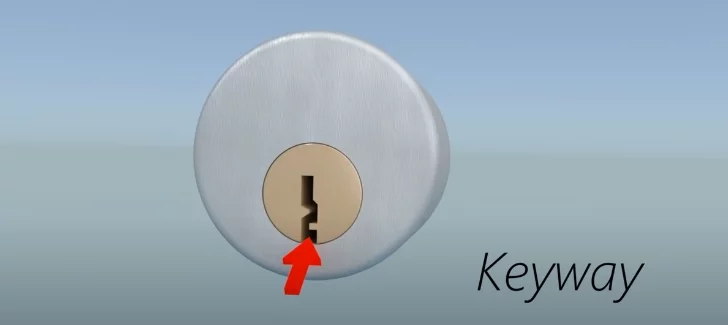
The specific shape of a keyway is known as warding and this warding shape continues along with the entire lock. All the keys are made to match the precise warding shape of a lock. The shape of the warding is an additional security feature that only lets the right key that has the same shape inside the keyway.
Pin Chambers
Pin chambers are also called pin wells. The pin wells or chambers are a sequence of holes or cavities that are punctured in linear lines throughout the shell inside a plug. These cavities or holes are the places that contain all the springs and the pins.
Apart from housing the springs and the pins, the pin chamber serve as a secondary rile to guide all the pins inside and outside of a cylinder and plug. The pin wells also have a significant part in lock picking.
The Key
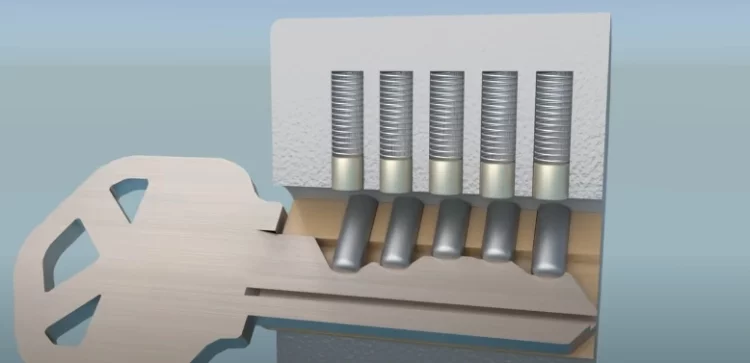
The function of every key's to raise the pins present inside the lock in the right position and to remove the pins that are blocking the shear line. Here are some of the components of a key that serve their specific role in unlocking the lock.
- The blade is the part of a key that's put inside the plug of a lock.
- The bitting is the specific cutting of a key that matches the key pins.
- The head is the big end of a key that provides the support to move the key inside the lock.
- The keys' shoulder provides the lateral restriction to perfectly align the key with key pins. And without the shoulder, you won't know how much to shove the key inside the lock.
The Working of a Pin Tumbler Lock
When a key is pushed inside a plug, it shoves all key pins upward, and because the cut of the keys' bitting and key pins' length is the same and all key pins would rise along shear line resulting in leaving off driver pins from a plug.
Meanwhile, the space among driver pins and key pins is the same as that of a locks' shear line, a key could rotate the locks' plug and detach a lock. In conclusion, the key removes all the obstructions that include all the pins from a shear line.
 |
 |
 |
 |

About Robert Fox
Rob Fox is a former hydro worker who used to teach self defence in Miami for 10 years. He's currently enjoying his retirement, playing cribbage and golf with his buddies, locksmithing and home security in his spare time. Rob is an avid reader, and has even written a few books on the subject of self defence.
Thoughts on "How does a Pin Tumbler Lock work?"
 |
 |
 |
 |
Check These Out
You can Get FREE Gifts. Furthermore, Free Items here. Disable Ad Blocker to receive them all.
Once done, hit anything below
 |
 |
 |
 |